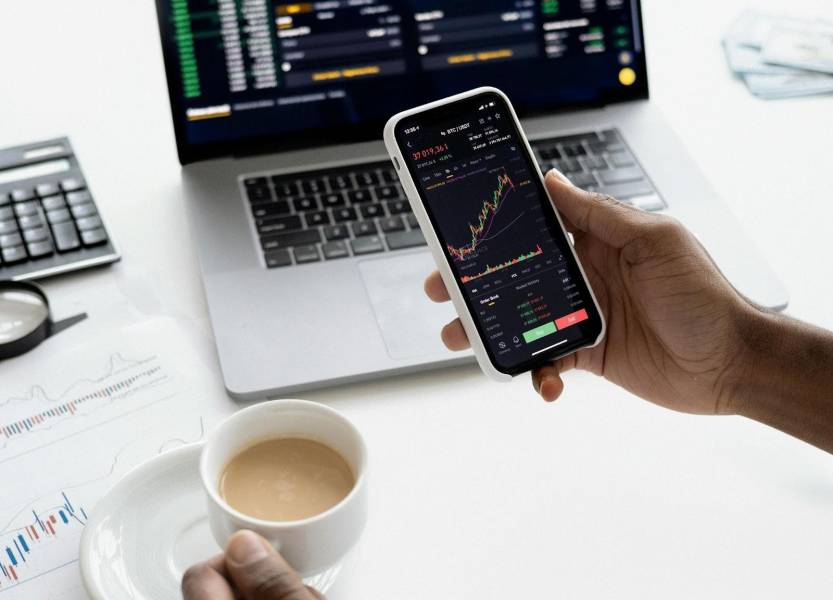Markets today are a wild ride—prices swing like a pendulum, serving up equal doses of risk and reward. Options trading’s your ticket to play that volatility, letting you hedge bets or chase gains, but it’s no walk in the park. The complexity can trip you up fast if you’re not armed with the right tools. This guide’s your roadmap to cutting through the chaos, spotlighting practical ways to trade smarter and stay cool when the market’s anything but.
It’s about turning volatility from a foe into a friend with tools that keep you sharp and in control.

Precision with Options Calculators
Good trading’s all about knowing your numbers, and an option pricing calculator is like your personal math whiz. Plug in time, volatility, strike price, and boom—it spits out what an option’s worth, no guesswork needed. It’s like having a crystal ball for pricing, showing you how different scenarios might play out.
Before you pull the trigger on a trade, run it through a calculator. It’ll flag how tiny shifts—like a volatility spike—could mess with your contract’s value. Most platforms toss in basic calculators, but some pack advanced features for the pros. Either way, it’s your first step to decisions that don’t leave you sweating.
Decoding Implied Volatility
Implied volatility’s the market’s mood ring, hinting at how much prices might jump around. High implied volatility screams “buckle up” with bigger risks and pricier premiums. Low volatility’s calmer, with cheaper contracts but less action. It’s a fickle beast—one headline can flip it overnight, jacking up trade costs or tanking your position.
Stay glued to it. A quick volatility shift can turn a solid trade sour, or open a golden window if you’re ready. Knowing what it’s signaling gives you a leg up, letting you time your moves with confidence instead of crossing your fingers.
Technical Indicators That Tell the Story
Charts are your market storyteller, and technical indicators are the plot points. Moving averages show you where the trend’s headed; MACD flags momentum shifts. Together, they’re like a treasure map for spotting when to jump in or bail out.
Don’t lean on just one—layer them. One indicator might scream “buy,” but another checks if the volume’s there to back it up. That combo cuts through the noise, keeping your trades rooted in data, not gut vibes. It’s your shield against impulsive moves that burn cash.
Getting Cozy with the Greeks
Options prices dance to a few key tunes, and “the Greeks” are your cheat sheet to the rhythm. Delta tracks how price swings move your option; gamma shows how delta might shift. Theta’s the time cruncher, ticking down value as expiration nears. Vega’s all about volatility’s impact, and rho keeps an eye on interest rates.
Each Greek’s a puzzle piece. Theta’s critical for short-term plays; vega’s your focus when volatility’s spiking. Watch them, and you’ll know exactly how to tweak your trades or dodge risks. It’s like having a playbook for every market mood, keeping you one step ahead.
Risk Management: Your Trading Lifeline
No tool’s worth squat without discipline. Risk management’s what keeps you from blowing up your account. Set stop-loss orders to cap your downside, and use limits to lock in gains before they vanish. It’s your emotional guardrail when the market’s screaming “panic!”
Size your positions smart—don’t bet the farm on one trade. Spread your capital across a few plays to soften the blow of a bad call. Risk control’s not sexy, but it’s the difference between a rough day and a wiped-out portfolio. Build it in, and you’re playing for the long haul.
Paper Trading: Practice Without the Pain
Jumping into options blind’s like learning to drive in a Ferrari—thrilling till you crash. Paper trading platforms let you practice with fake cash in real market conditions. Test your strategies, play with calculators, track the Greeks, and see where you’d win or wipe out.
It’s a safe space to screw up, learn, and tweak your approach. Most platforms use live data, so it feels real without the gut-punch of actual losses. Nail your game plan here, and you’ll step into live trading with swagger, not stress.
Picking a Platform That Delivers
Your trading platform’s your cockpit—make sure it’s loaded. Beyond placing orders, it should dish out charts, indicators, alerts, and a solid calculator. Speed’s non-negotiable; a laggy platform can mean missed trades when volatility’s raging.
Some folks love web-based setups for big screens; others want mobile apps for trades on the go. Test-drive a few—reliability and ease matter more than flashy extras. Pick one that fits your flow, and you’re set to trade without tripping over clunky tech.

Wrapping It Up
Options trading’s not for the faint-hearted, but with the right tools, volatility’s less a beast and more a beast you can ride. Calculators, indicators, the Greeks, and ironclad risk management turn wild markets into your playground. Add in paper trading to hone your chops, and a platform that keeps up with your hustle, and you’re not just trading—you’re strategizing like a pro.
Every hotshot trader started green, grinding through charts and testing tools. With patience and practice, you can too. Smarter trading’s about clarity over chaos, decisions over desperation. Grab these tools, and make volatility work for you.

Peyman Khosravani is a global blockchain and digital transformation expert with a passion for marketing, futuristic ideas, analytics insights, startup businesses, and effective communications. He has extensive experience in blockchain and DeFi projects and is committed to using technology to bring justice and fairness to society and promote freedom. Peyman has worked with international organizations to improve digital transformation strategies and data-gathering strategies that help identify customer touchpoints and sources of data that tell the story of what is happening. With his expertise in blockchain, digital transformation, marketing, analytics insights, startup businesses, and effective communications, Peyman is dedicated to helping businesses succeed in the digital age. He believes that technology can be used as a tool for positive change in the world.








